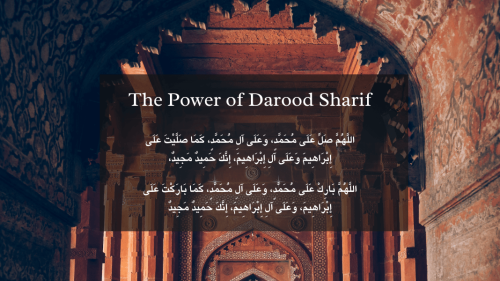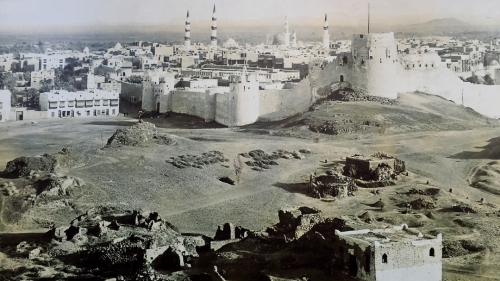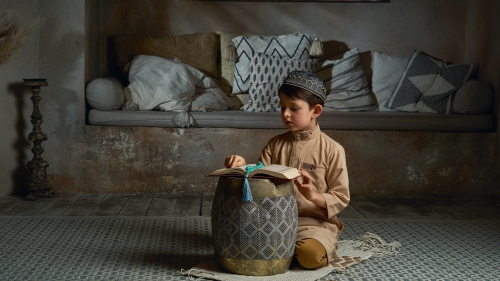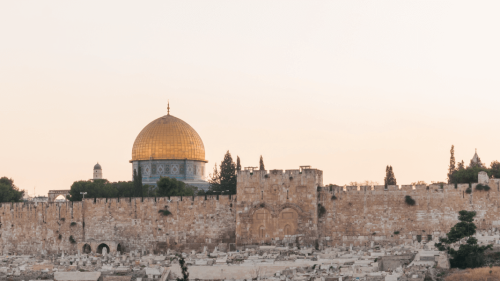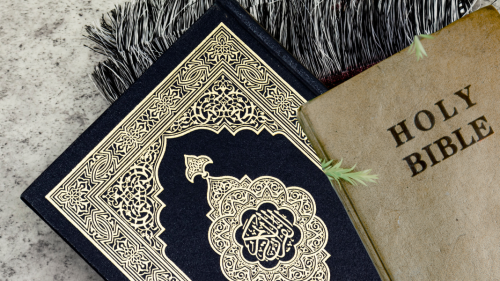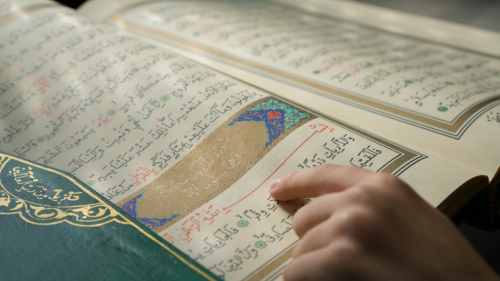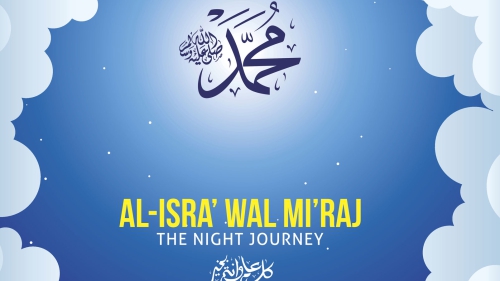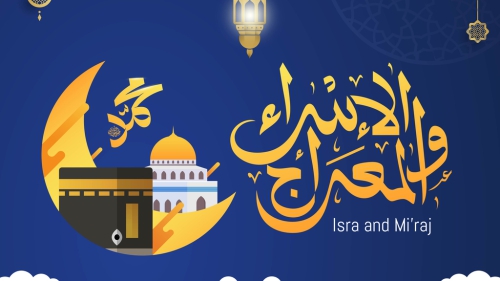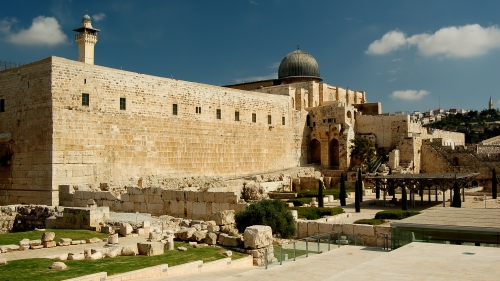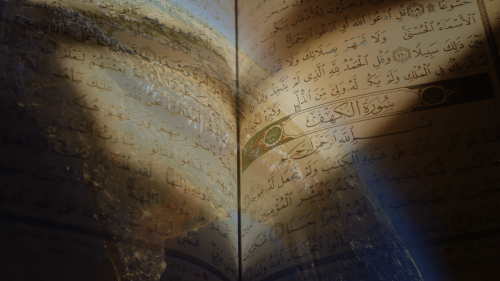At what age did Aisha marry the Prophet Muhammad?

When covering the Prophet Muhammad's ﷺ life, one of the most debatable topics is that of his wife Aisha's age, when the two married.
Her alleged young age has been used in smear campaigns against the Prophet. The latest publication dealing with the topic is "Jewel of Medina" by journalist Sherry Jones - a novel on the life of Aisha. This novel has stirred controversy over the topic, as US publisher Random House expressed its desire to postpone its publication out of fear that its content could spark violence.
Reports that Aisha bint Abi Bakr was 6 or 7 years old when she became engaged and 10 when she married [1] have been the most basic factor in the formation of the view regarding her age of marriage. Also, it should not be forgotten that factors such as similar practices being quite widespread at the time and the physical development of children becoming complete at an earlier age at that time also contributed to the dispersion of this view. For this reason, this subject was not made a current issue for discussion until very recently.
Orientalists who do not consider the conditions of the time period in which an action occurred and who examine Islam from "outside" have made this a current issue. The Muslim world's reaction to this different stance has been mixed. While some have insisted that Aisha's above-mentioned age at marriage is correct [2], others are of the opinion that Aisha was older [3]. In this situation, where it is not always possible to maintain a balanced view, various approaches have developed as an answer to Orientalists' claims, including those that choose to deny the reports or ignore the existence of other alternatives as a response to this view.
First of all, we should know that everyone is a child of the time they live in and therefore must be evaluated according to the cultural context of the relevant time. There are certain values that form a society's customs and when a society is evaluated, these values have to be taken into consideration. Otherwise, were we to attempt to evaluate historical events within today's conditions, we should remember that we are fated to make mistakes.
It is known that during the period when Prophet Muhammad, peace and blessings be upon him, existed, young girls were married at an early age [4] and that age difference was not important in marriage [5]. Especially in regards to young girls, it should not be forgotten that there was social pressure for this, that they matured earlier due to climatic and geographical conditions and that they were seen as goods that needed to grow in their husband's house. Moreover, this is not a matter just related to girls; boys were also married at ages 8, 9 and 10 and they became the head of a family at an age that is perceived as very young today [6]. Perhaps it is this culture that lies at the basis of this issue's not having been questioned until recent times. Otherwise, it was impossible for a mentality that wanted to brew a storm in regards to the Prophet's marriage with Zaynab bint Jahsh and that slandered Aisha after her return from the Muraysi expedition to not criticize such an issue at that time.
In the verses of the Quran that came at the same time, the age for marriage was mentioned and it was emphasized that children should be married when they come of age [7]. So, opposing a divine suggestion cannot be considered. Using the mentality of Umar, if the intervention had been a matter of consideration here, the Prophet would surely have been warned in a coming revelation and a step would have been taken to resolve the issue. At any rate, the Prophet's wedding to Aisha took place in accordance with direction from divine will [8].
Now, if you like, putting the extremes behind us and using moderate criteria, let's examine sources related to Aisha's age at marriage once again.
1. While listing names of Muslims during the first days of Islam, Aisha's name, together with her older sister Asma, are listed immediately after the names of the Sabiqun al-Awwalun (the first ones) like Uthman ibn Affan, Zubayr ibn Awwam, Abdurrahman ibn Awf, Sa'd ibn Abi Waqqas, Talha ibn Ubaydullah, Abu Ubayda ibn Jarrah, Arqam ibn Abi al-Arqam and Uthman ibn Maz'un. Being the 18th person to accept Islam, Aisha's name precedes the names of Umayr ibn Abi Waqqas, Abdullah ibn Mas'ud, Salit ibn Amr, Ja'far ibn Abi Talib, Abdullah ibn Jahsh, Abu Hudayfa, Suhayb ibn Sinan, Ammar ibn Yasir, Umar ibn Khattab, Hamza ibn Abdilmuttalib, Habbab ibn Aratt, Said ibn Zayd and Fatima bint Khattab [9]. This means she was living then and was mature enough to make such a choice and exercise her will. In addition, the information in reports that "she was a small girl then" shows that her name was mentioned in a conscious way [10].
This date refers to the early days of Islam. For it is known that Aisha's sister Asma, who was born in 595, was 15 when she became a Muslim [11]. This indicates the year 610 when the Prophet started to receive the revelation and this then shows that Aisha was at least 5, 6, or 7 that day and that she was at least 17 or 18 when she married the Prophet in Medina.
2. In regard to days in Mecca, Aisha said, "I was a girl playing games when the verse, 'Indeed, the Last Hour is their appointed time [for their complete recompense], and the Last Hour will be more grievous and more bitter' [12] was revealed to God's Messenger [13]." This information opens other doors for us regarding her age.
The verse under consideration is the 46th verse of Surah Qamar, the 54th chapter of the Quran, which explains the miracle of the split moon [the splitting of the moon is one of the miracles performed by the Prophet Muhammad]. Revealed as a whole, this surah came while the Prophet was in Ibn Arqam's home in the fourth (614) [14] or eighth (618) or ninth (619) [15] year of his mission, according to differing reports. Looking especially at necessity, some scholars focused on the date being 614; when this date is taken, Aisha either had not been born or had just been born. While when this date is taken it appears that she must have been born at least eight or nine years earlier, the situation does not change much when 618 or 619 are taken. In that situation, she would have only been 4 or 5 years old, neither an age at which she would be in a position to understand this event and relate it years later. According to the second possibility, she was probably born when Muhammad's prophethood had just begun [16].
Another matter worth mentioning here is that while describing that day, Aisha stated, "I was a girl playing games." The word she used to describe herself, jariya, is used to describe the passage into puberty. Ibn Yara, an Arab poet, describes this passage as follows: "When a girl becomes 8 years old, she is not a 'jariya.' She is a bridal candidate that I can marry to Utba or Muawiya."" Some scholars say that it is used for girls who are older than 11.
If we look at the issue taking 614 as the year that Surah Qamar was revealed, Aisha would have been born at least eight years before the prophetic mission, or in 606. If we accept 618, then the year of birth would have been 610; this event alone makes it impossible for her to have been 9 when she married.
When this information is combined with her name being on the list of the first Muslims, we get the result that Aisha's date of birth was probably 606. Consequently, she would have been at least 17 when she married.
3. Of course, Aisha's memories of Mecca are not limited to this. In addition to this, the following memories confirm this matter:
a) Her saying that she had seen two people begging who had remained from the Year of the Elephant (the year in which Yemeni King Abraha sent an army of elephants to Mecca in order to destroy the Kaaba; the elephants were pelted with pebbles dropped on them by birds), which occurred 40 years before the prophetic mission and is accepted as a milestone for determining history, and her handing down this information with her sister Asma only [17].
b) Her describing in detail that during difficult times in Mecca, God's Messenger had come to their house morning and evening and that her father, Abu Bakr, who could not endure this hardship, attempted to migrate to Abyssinia [18].
c) Her stating that first, it was mandatory to offer two cycles of obligatory prayer and that later it was changed to four cycles for residents, but that during military campaigns two cycles were performed [19].
d) In reports about the early days, there being statements like, "We heard that Isaf and Naila had committed a crime at the Kaaba and for this reason, God turned them into stone as a man and woman from the Jurhum tribe [20]."
4. Being betrothed before the engagement: Another factor that supports the above view is that at the time when the Prophet's marriage was a topic of discussion, Aisha was engaged to Mut'im ibn Adiyy's son Jubayr. The suggestion for the Prophet to marry Aisha came from Hawla bint Hakim, the wife of Uthman ibn Maz'un, someone not from the family. Both situations show that she had come to the age of marriage and was known as a young marriageable girl.
As is known, this betrothal was broken by the Ibn Adiyy family due to the possible religious conversion of their son to Islam, and it was only after this that Aisha's engagement to Muhammad, peace and blessings be upon him, took place [21]. Consequently, the marriage agreement was either made before the prophetic mission or when the call to Islam was being made openly (three years after the Prophet began receiving revelation). If it was made before the mission, together with the idea that Aisha was 9 years old when she married being shaken from its foundation, it implies that Aisha was born even earlier than has been thought. For this reason, some say that she was a 13- or 14-year-old girl then [22].
It should not be overlooked that this decision was made during the period when the call to Islam had begun to be made openly. In regard to time, this means 613-614. If it is assumed that Aisha was born four years after the mission, it has to be accepted that she had not yet been born, so it is not possible to talk about a marriage agreement under these circumstances. In this case, it has to be accepted that she was at least 7 or 8 when her engagement was broken, so the year was probably 605 [23].
Here, another possibility can be mentioned; namely, an agreement of arranged future marriage similar to "cradle tallying," an agreement between parents in the early years after the birth of a baby. However, there are no details in the texts under consideration to confirm this.
Dr. Reşit Haylamaz is the editor-in-chief of Kaynak Publishing Group.
Footnotes:
1. Bukhari, Manaqib al-Ansar, 20, 44; Muslim, Nikah, 71; Fadail al-Sahaba, 74; Abu Dawud, Adab, 55; Ibn Maja, Nikah, 13; Nasai, Nikah, 78; Darimi, Nikah, 56.
2. Azimli, Mehmet, "Hz. Aise'nin Evlilik Yası Tartışmalarında Savunmacı Tarihciligin Cıkmazı," İslami Arastırmalar, Vol. 16, Issue 1, 2003.
3. See Dogrul, Omer Rıza, Asr-ı Saadet, Eser Kitabevi, Istanbul, 1974, 2/141; Nadwi, Sayyid Sulayman, Hazreti Aişe, (trns. by Ahmet Karataş), Timaş Yayınları, İstanbul, p. 21, 2004; Savaş, Rıza, "Hz. Aişe'nin Evlenme Yası Ile Igili Farklı Bir Yaklasım,"" D. E. U. İlahiyat Fak. Derg. Issue 4, İzmir, 1995, pp. 139-144; YUce, AbdUlhakim, Efendimiz'in Bir GUnU, Isık Yayınları, Istanbul, pp. 82-83, 2007.
4. Abdul Muttalib, the grandfather of the Prophet, married Hala bint Uhayb, who was young then. Since he married off his son Abdullah to Amina at an early age at around the same time of his own marriage with Hala, the Prophet was almost of the same age with his uncle Hamza.
5. In order to have family relationship with the Prophet and thus further his close relation with God's Messenger, Umar ibn Khattab married Ali's daughter Umm Qulthum, and this marriage was not found strange at that time at all.
6. Amr ibn As, for instance, was 12 years older than his son Abdullah. This means that he was around 10 when he got married. For further information see Ibn al-Athir, Usud al-Gaba, 3/240.
7. Nisa: 4/6.
8. Bukhari, Ta'bir, 21, Manakib al-Ansar, 44, Nikah, 9; Muslim, Fadail al-Sahaba, 79; Ibn Hanbal, Musnad, 6/41, 128.
9. Ibn Hisham, Sira, 1/271; Ibn Ishaq, Sira, Konya, 1981, 124.
10. Ibn Hisham, Sira, 1/271; Ibn Hisham, Sira, 124.
11. Nawawi, Tahzib al-Asma, 2/597; Hakim, Mustadrak, 3/635.
12. Qamar 54:46.
13. Bukhari, Fadail al-Qur'an, 6; Tafsir al-Sura, (54) 6; Ayni, Badruddin Abu Muhammad Mahmud ibn Ahmad, Umdat al-Qari Sharh Sahih al-Bukhari, Dar alIhya al-Turas al-Arabi, 20/21; Asqalani, Fath al-Bari, 11/291.
14. Suyuti, Itqan, Beirut, 1987, 1/29, 50; Dogrul, Asr-ı Saadet, 2/148.
15. The month difference stems from the lunar calendar.
16. Taking this information into account, some people calculate Aisha's age at marriage as least 14 or 22, up to 28. We have not focused on these as they are not supported by the sources.
17. Ibn Hisham, Sira, 1/176; Haysami, Majma al-Zawaid, 3/285; Ibn Kathir, Tafsir, 4/553; Bidaya, 2/214; Qurtubi, Tafsir, 20/195.
18. Bukhari, Salat, 70, Kafala, 5, Manaqib al-Ansar, 45, Adab, 64; Ibn Hanbal, Musnad, 6/198.
19. Muslim, 3/463; Mu'jam al-Kabir, 2/285, 286; Mu'jam al-Awsat, 12/145; Ibn Hisham, Sira, 1/243.
20. Ibn Hisham, Sira, 1/83.
21. Bukhari, Nikah, 11; Ibn Hanbal, Musnad, 6/210; Haysami, Majma al-Zawaid, 9/225; Bayhaqi, Sunan, 7/129; Tabari, Tarih, 3/161-163.
22. Savaş, Rıza, D. E. U. İlahiyat Fak. Dergisi, Issue 4, İzmir, pp. 139-144, 1995.
23. Berki, Ali Hikmet, Osman Eskioglu, HatemU'l-Enbiya Hz. Muhammed ve Hayatı, 210.
Topics: Aisha Bint Abu Bakr, Marriage, Prophet Muhammad (S)
Views: 5149
Related Suggestions







